ASUS PQ321Q UltraHD Monitor Review: Living with a 31.5-inch 4K Desktop Display
by Chris Heinonen on July 23, 2013 9:01 AM ESTAfter I published the initial grayscale dE2000 results for the PQ321Q, there was a lot of feedback over the quality of the numbers. The simple fact in the end is that only two of the numbers rose above the visual threshold of a dE2000 of 3.0. Yes, I would really like to see an average dE2000 of 1.0 or less, but the point of dE2000 is to tell us if we can see an error or not. With the exception of pure white, and even then just barely, the PQ321Q should look incredibly neutral without any calibration done to the grayscale. The gamma also tracks the 2.2 target very well, which will help to make up for the lack of depth in the black level.
Of course we want to calibrate the PQ321Q to see what it can really do. If you are buying a $3,500 display, you can likely buy, or rent, calibration gear to get it dialed in if you really care about image quality. And if you do, you are in for a treat.
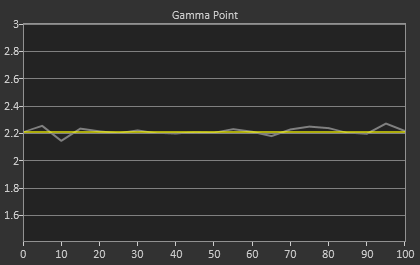
Post-calibration, our dE2000 average is now 0.56. We see every error below 2.0 except for 0, which really doesn’t matter anyway. There is no color shift, and the gamma tracks along 2.2 almost perfectly. Our contrast ratio has taken a small hit, down to 704:1 as it has to manipulate the peak white level to be more accurate. What we see now is a grayscale image that is basically flawless.
With color the PQ321Q has a pair of issues. The first issue is undersaturation in the gamut when it comes to red and blue. This also causes Magenta to be undersaturated, and brings out some high dE values for 100% saturations on those colors. We also see that green and red fall outside the sRGB gamut triangle. This too is unfortunate as it pushes yellows and oranges outside the gamut, and causes errors there. Our Cyan value is almost perfect, but every other color has some issue on the PQ321Q, at least at 100%.


The reason we don’t just stop with the gamut charts is because they only represent 6 colors out of millions. They might have a large error, but it is rare to see 100% saturated colors in real content like photos or movies. To test this we use the Colorchecker chart in CalMAN. We’ve always used the Gretag Macbeth chart, which has 24 common colors on it. SpectraCal has added a 96-sample chart to the newest version of CalMAN. This adds more skin tones and other colors, and will provide a more accurate indication of monitor performance. The color samples for it are taken from an XRite chart. I’m going to run them both for a few reviews to see how it goes, but more samples leads to better accuracy, and lets us pinpoint exactly where things are going bad.
On the PQ321Q the issues all come back to Red/Orange/Yellow shades. Skin tones are good, blues and purples and cyans are all decent, and blue-greens are nice as well. Those tones that fall outside of the triangle cause the dE2000 average to rise way, way up and show us where the issues are. Reds certainly have a good amount of pop on the ASUS, and there really isn’t a good way to bring them back in. This issue is the largest one with the ASUS PQ321Q, as that extra gamut can’t really be addressed.
Traditionally if you look at the standard gamut dE2000 chart and see a large error in red, that indicates you will have issues with skin tones and people looking sunburned, With the larger Color Checker chart, we see that this is not the case, and that skin tones are, for the most part, under control while orange and yellows are not. This extra data helps us realize where the ASUS will look correct and where it will fall short.

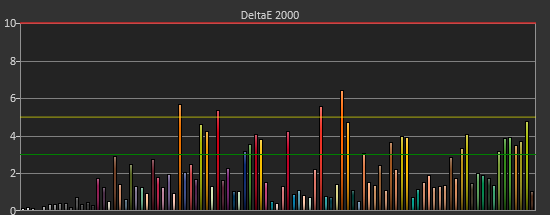
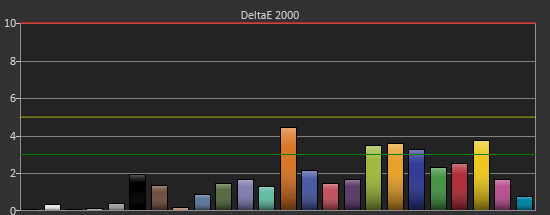
With the saturations charts, we see that the errors start small, like usual, and get larger as you move towards the edge of the gamut. Blue has the largest error, though we are less sensitive to blue than other colors. Cyan again remains great, and it would be nice if every color had the same performance as it does.
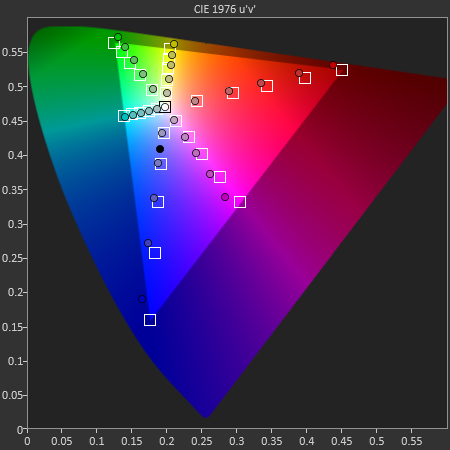
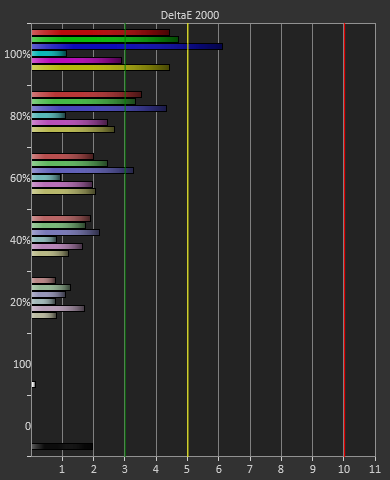
Post-calibration the ASUS is a bit of a mixed bag. We get great grayscale and gamma performance, but most people don’t just deal in black-and-white content. The color gamut provides a bit of an issue being both under-saturated and out-of-gamut at the same time. Looking through images the issue that pops out to me is the yellows. They really pop off the screen and look too bright. The color of reds looks slightly off, but yellow has the biggest issue that I can see with my eyes.


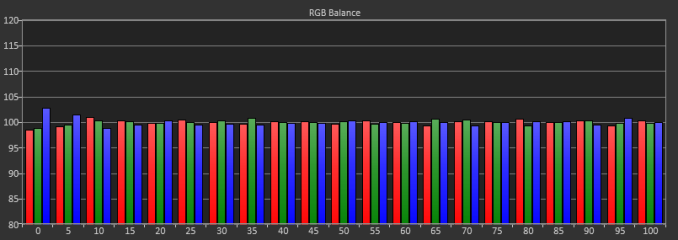
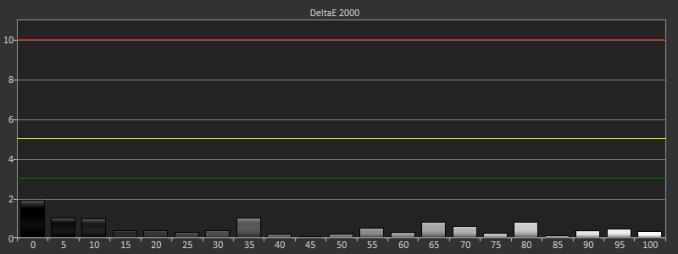











166 Comments
View All Comments
NLPsajeeth - Tuesday, July 23, 2013 - link
Great review.While dual HDMI 4k doesn't work at the moment, NVIDIA are working on hacks to their driver (pcper has a beta copy for testing) so you should see this functionality soon.
If NVIDIA actually supported 2x1 and 2x2 Surround with any monitor, they wouldn't have to resort to such hacks but apparently artificially crippling their Windows driver to preserve Quadro revenue is more important.
Tiled 4K displays are going to be more common with all the delays HDMI 2 is facing. 10-bit color is also going to be standard with all these displays. So I have to wonder how long they can keep crippling their windows driver and how scalable is having EDID whitelist for these types of monitors.
On the plus side, at least the GeForce Linux drivers aren't crippled like this.
Steveymoo - Tuesday, July 23, 2013 - link
Great, finally. I also find it irritating that tech built for disposible, none productive consumers is being given priority for improvements over professional desktop hardware (which would give tangible benefits to people doing actual work.)You mention the new tech uses a more responsive chemical composition, and I can't see a refresh rate in your spec list. Are we likely to ever see these screens run above 60hz? Probably not.
cheinonen - Tuesday, July 23, 2013 - link
Right now I'm not sure that DisplayPort can handle this resolution at refresh rates above 60 Hz. HDMI 2.0 should allow for up to 120 Hz at that resolution, at least if they follow the full Rec. 2020 UHD spec, but that keeps getting delayed.DanNeely - Tuesday, July 23, 2013 - link
Is HDMI2.0 4k@120hz a dual cable solution? I looked at what's written up in Wikipedia and it's listed as maxing out at 4k@60hz; the same limit as DP 1.2.cheinonen - Tuesday, July 23, 2013 - link
HDMI 2.0 isn't final or announced yet. Any specs that are out there for it are rumors right now. The UHD spec, Rec. 2020, calls for up to 120Hz at 8K resolutions. I don't think we'll see that, but I'd think we see 120Hz at 4K because you need at least 96 Hz to support high frame rate 3D, like The Hobbit, if that ever comes to the home.DanNeely - Tuesday, July 23, 2013 - link
4k@120hz would be nice; but even at only 24bit color that's a 24 gigabit datastream. Short of going stealth-dual cable by adding additional data lines I don't think the technology is here to do that at an affordable cost in the near future.madmilk - Tuesday, July 23, 2013 - link
Thunderbolt shows that it is possible to have 40Gbps in a DisplayPort socket. Certainly not cheap though. I don't see the active cables being a necessity though, so long as fiber is not required.sheh - Tuesday, July 23, 2013 - link
Would be nice if it supported 120Hz at least at 1920x1080. It certainly supports the bandwidth already.dishayu - Tuesday, July 23, 2013 - link
I think 31.5 inches is slightly too big and 30Hz WAY too low. Just like Chris says it's hard to go to a lower resolution display. I think, for me it is hard to give up the amazing IPS colors and 120Hz refresh rate. And I don't think there are any 27 inch 4K, 120Hz monitors in the pipeline for the next 5 years. (And we're not even talking affordle yet). Looks like i'm going to be stuck at 27 inch 1440p, 120Hz for some time to come.cheinonen - Tuesday, July 23, 2013 - link
The ASUS runs at 60Hz with either a DisplayPort 1.2 connection using MST (how I tested) or dual HDMI 1.4 outputs, which I don't have on my graphics card and couldn't test.